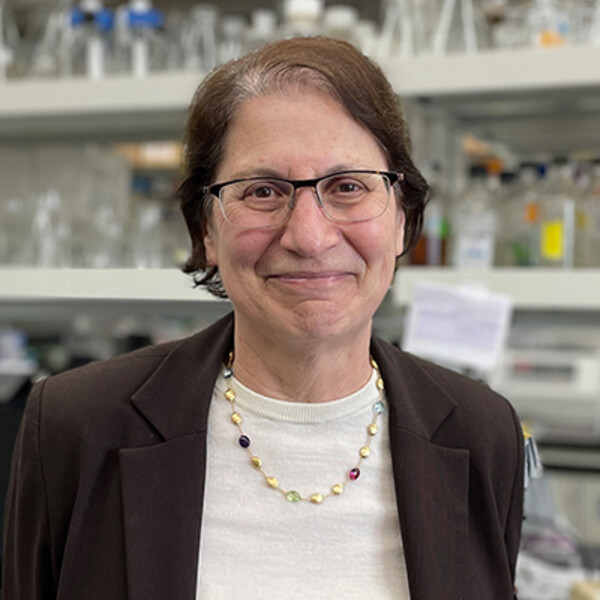LMP scientists receive CIHR funding

In the latest Canadian Institutes of Health Research (CIHR) round, six projects from primary, and six from cross-appointed faculty in the Department of Laboratory Medicine and Pathobiology were funded. Two more faculty received funding from a special one-off grant from CIHR on Pandemic Preparedness.
From Artificial Intelligence predicting cancer, to understanding antifungal resistance, the range of projects demonstrate the span of research in understanding disease being undertaken in LMP.
We are also proud that five out of the six primary-led projects are headed by female scientists.
Congratulations to all the funded projects!
Read about each project below.
- Dr. Cynthia Hawkins: Next generation precision oncology for pediatric-type AYA gliomas
- Dr. Allison McGeer and Dr. Julianne Kus: Understanding the epidemiology and burden of invasive Candidal infections and antifungal resistance in Canadian hospitals (Can-EPI-R)
- Dr. Rita Kandel: An intervertebral disc replacement: a regenerative medicine approach
- Dr. Susan Done: Triple negative breast cancer intratumour heterogeneity and disease progression
- Dr. Sharon Nofech-Mozes: Using AI to predict the presence of occult invasive carcinoma following diagnosis of DCIS on biopsy
- Dr. Eleftherios Diamandis: KaliDerm Therapeutics: A research/commercialization plan to validate, better define and add value to our proprietary dual KLK5/7 inhibitor as a novel topical therapeutic for Netherton Syndrome
- Dr. Razqallah Hakem: Novel contrasting functions of RNF168 and RNF169 in breast cancer and therapeutic implications
- Dr. Dana Philpott: A novel role for IL-18 in the control of the intestinal epithelium during infection and inflammation
- Dr. Slava Epelman: Cardioprotection during hypertensive heart disease is mediated through anti-viral cytokine pathways
- Dr. Rod Bremner: Role of YAP and TAZ in Acute Myeloid Leukemia
- Dr. Alain Dabdoub: Multiomic approaches to identify regenerative pathways for the treatment of inner ear disorders
- Dr. Mjaye Mazwi: Using heart rhythm detection as a prototype to translate machine learning equitably and reproducibly to the point of care
- Dr. Arinjay Banerjee: Molecular determinants of differential accessory protein-mediated pathogenesis during SARS-CoV-2 and MERS-CoV infections
- Dr. Mohit Kapoor: Contribution of synovial cell subsets to the pathogenesis of knee osteoarthritis
Project grants

Dr. Allison McGeer, Lunenfeld-Tanenbaum Research Institute at Sinai Health and Dr. Julianna Kus, Ontario Agency for Health Protection & Promotion
Understanding the epidemiology and burden of invasive Candidal infections and antifungal resistance in Canadian hospitals (Can-EPI-R)
As antimicrobial resistance worsens, and hospital care becomes more and more capable of treating complex diseases, fungal infections are emerging worldwide. As they do, antifungal agents (antibiotics used for treating fungal infections) have been increasingly used and resistance to these agents is also emerging. As yet, there are no Canadian data to assess the burden of these infections and the resistance associated with them.
This study will assess the burden of these infections, and collect information about them that will support needed efforts to protect patients from these infections in the future.
Dr. McGeer and Dr. Kus faculty profiles

Dr. Cynthia Hawkins, SickKids Hospital
Next generation precision oncology for pediatric-type AYA gliomas
Gliomas are the most common brain tumor and the most common cause of cancer-related morbidity and mortality in adolescent/young adults (AYA). While children are now successfully molecularly matched to modern targeted treatments, data was lacking on AYA-gliomas. In a unique effort, we recently screened >800 AYA patients and observed that >30% harbor pediatric type mutations. But these AYA pediatric-type gliomas are currently unrecognized and instead receive toxic non-effective chemoradiotherapy.
To address this gap, we have established "Translating Research and Innovation to improve AYA Lives for Gliomas in Ontario (TRIAL-->GO)," a province-wide multidisciplinary AYA tumor board of major cancer centers across Ontario which has since expanded nationally. Here we will leverage this team to improve the cancer care path for AYA glioma patients.
We will use cutting-edge diagnostic tools recently developed for the clinic to find the molecular events and match patients to the right therapy for their tumor. For uncharacterized molecular alterations, we will develop pre-clinical models that mimic AYA-glioma and test for the best therapy. Finally, we will gather data on treatment outcomes and determine if our diagnostic tools can reliably predict response to targeted inhibitors. Completion of this project will transform AYA-glioma treatment to improve quality of life and survival.
Read about Dr. Hawkins' research:

Dr. Rita Kandel, Mount Sinai Hospital
An intervertebral disc replacement: a regenerative medicine approach
Degeneration of the intervertebral disc can result in pain, neurological symptoms and difficulty in performing many of the acts of daily living. This disease is so common that approximately 1 in 50 Canadians become disabled by back pain at some point in their life. Currently, there is no optimal treatment for these individuals. Although the pain is rarely life-threatening, the cost in terms of lost productivity and suffering is significant. As well, the consequences of taking pain relieving therapeutics can result in side effects that have a negative impact on health. Thus, there is a great need to develop an entirely new approach to treat this disease.
The goal of our research is to generate, using a developmentally inspired tissue engineering approach, a biological intervertebral disc in the lab composed of tissue which demonstrates hierarchal structure of the native disc and has functional weight bearing capability and also address the problem of implant fixation in a weight bearing site. This will allow progression towards our goal ultimately of developing a functional biological intervertebral disc tissue replacement and its translation into clinical use. As well these studies have the potential to identify new ways to regenerate intervertebral disc tissue and to support identification of new drugs to treat degenerative disc disease which will facilitate healthy aging.

Dr. Susan Done, University Health Network
Triple negative breast cancer intratumour heterogeneity and disease progression
Triple negative breast cancer (TNBC) is the most aggressive subtype of breast cancer with more deaths occurring within the first 5 years after diagnosis than for other subtypes. Breast cancers are routinely tested for estrogen receptor (ER), progesterone receptor (PgR) and human epidermal growth factor receptor 2 (HER2). TNBC is defined by lack of these three receptors. Significant progress has been made towards targeted treatment of Luminal (ER-receptor positive), and HER2 subtypes of breast cancers. Although TNBCs account for approximately 15% of breast cancer diagnosis because of their aggressive biology they account for approximately 25% of breast cancer-related deaths.
To understand why some TNBCs behave more aggressively we have developed advanced molecular methods to look at genomic changes in tumour cells and infiltrating immune cells. We have recent evidence that the variability of these cells is related to metastasis. The methods we have developed can be used to study a group of samples that have been stored for more than 10 years. In this group we know which tumours were the most aggressive and killed the patients. We will study tumour that has spread beyond the breast to lymph nodes. We will also identify molecular alterations present in TNBCs that did not respond to chemotherapy.
Our studies will lead to a better understanding of the molecular alterations involved in the progression of TNBC, and some of the features that are associated with the shortest survival. It would be very helpful to be able to identify the women with the worst prognosis TNBCs and then they could be targeted for more intensive therapy. Conversely, treatment could be reduced in women found to have less aggressive forms of TNBC which would reduce both side effects and costs. Ultimately, we believe this work will result in promising new therapeutic targets.
Read the article: Will we ever see a future free from breast cancer?

Dr. Sharon Nofech-Mozes, Sunnybrook Health Sciences Centre (with Dr. Anne Martel, Department of Medical Biophysics)
Using AI to predict the presence of occult invasive carcinoma following diagnosis of DCIS on biopsy
The number of women diagnosed with Ductal Carcinoma In Situ (DCIS), a non-invasive form of breast cancer, has increased rapidly since the introduction of breast screening programs. DCIS is regarded as a potential precursor to invasive cancer so treatment typically involves surgery to remove the lesion. However, only 14-53% of DCIS cases progress to invasive cancer over a period of 10 or more years and there are growing concerns about overtreatment. This has led to attempts to de-escalate treatment by carrying out less invasive surgery, or even omitting surgery altogether. Several trials are ongoing to investigate whether it is safe to manage women with low-risk DCIS with active surveillance. To safely de-escalate treatment, it is essential to rule out the presence of invasive disease. Unfortunately, it has been found that in 18-35% of cases assessed as DCIS on the initial biopsy, invasive cancer is found in the surgically removed tissue - this is known as upstaging. When upstaging occurs, the patient may have to be recalled for a second procedure to carry out a lymph node biopsy since the risk of metastases can no longer be ruled out. This is costly, has an increased risk of complications and causes stress to the patient. For surveillance trials, the risk of upstaging is a very significant problem since surgery is delayed until invasive cancer is detected, increasing the risk of progression.
An accurate method of predicting upstaging is essential to ensure that women with occult invasive disease receive appropriate treatment whilst still ensuring that women with purely non-invasive DCIS are not over-treated. We will train an artificial intelligence algorithm to predict upstaging using information extracted from mammograms and images of biopsy specimens. This will provide a personalized estimate of the probability that an initial diagnosis of DCIS will be upstaged to invasive cancer, allowing each woman to make a more informed choice about treatment options.
Dr. Nofech-Mozes faculty profile
Read more about her research in Researchers at U of T improve personal risk measurements for non-invasive breast cancer

Dr. Eleftherios Diamandis, Mount Sinai Hospital
KaliDerm Therapeutics: A research/commercialization plan to validate, better define and add value to our proprietary dual KLK5/7 inhibitor as a novel topical therapeutic for Netherton Syndrome
Outer epidermis contains several proteases which collectively orchestrate vital skin functions, such as skin renewal, barrier function and innate immunity. Amongst them, evidence from genetic and biochemical studies have highlighted specifically two proteases (KLK5 and KLK7) as the most important epidermal KLKs. These powerful enzymes are exclusively expressed in outer skin. Evolutionary, several endogenous mechanisms have been selected (e.g. pH, endogenous inhibitors) in order to secure a delicately balanced proteolytic activity in upper skin. While vital for normal skin physiology, increased skin KLK proteolytic activity can lead to severe skin pathologies. Animal and human data demonstrate that aberrant skin KLK (and specifically aberrant skin KLK5 and KLK7) activity is central to development of skin inflammation, as best illustrated in Netherton Syndrome (NS). NS is a genetic skin inflammatory disease caused by loss-of-function mutation in the endogenous skin KLK inhibitor, LEKTI. The resulting unopposed skin KLK activity leads to severe atopic dermatitis (AD)-like manifestations and life-threatening destruction of skin barrier with profound water loss, infection, itch and inflammation. Several lines of evidence have fully sealed the importance of KLK5 and KLK7 as critical therapeutic targets in NS. Recent data from mouse models of NS has shown that concurrent KLK5 and KLK7 deletion completely rescues the disease phenotypes in mice bearing the NS causing LEKTI mutations.
Our team launched 5 years ago a program for the development of topical kLK5/7 inhibitors. We have already identified promising lead compound series. Here we wish to support the commercialization growth of our novel technology (i.e. the proprietary KLK5/7 inhibitors) as novel topical drugs for skin inflammation. Bringing these compounds to approval for clinical trial testing will significantly enhance the interest of relevant receptor companies, organizations, and potential investors.
Dr. Razqallah Hakem, cross-appointed from the Department of Medical Biophysics
Novel contrasting functions of RNF168 and RNF169 in breast cancer and therapeutic implications
Understanding the root causes of breast cancer is essential to improve its therapy. Despite advances made in the past decades in identifying mechanisms that drive breast cancer development, there is an urgent need to discover novel therapies tailored for breast cancer patients. We are helping to address this gap with an "Achilles Heel" approach to identify new genetic targets to kill breast tumors. RNF168 and RNF169 are closely related genes. We have made a discovery that these genes have opposing effects on breast cancer. While RNF168 protects from specific breast cancer types, RNF69 defects promotes breast cancer development. Furthermore, we identified that these two genes have different effects on biological processes that are frequently deregulated in breast cancer. Notably, we discovered that RNF168 is an "Achilles Heel" for breast cancer associated with defective RNF169. We plan to build on these discoveries to characterize the novel biological functions of these two genes, and identify novel targets to kill breast tumors associated with defective RNF169.
Dr. Dana Philpott, cross-appointed from the Department of Immunology
A novel role for IL-18 in the control of the intestinal epithelium during infection and inflammation
Intestinal inflammation due to infection or diseases like inflammatory bowel disease causes great deal of morbidity and mortality. Our recent work has uncovered a novel pathway in the intestine that protects against infection. Interesting also is that dysregulation of this pathway has been implicated in the inflammatory bowel disease, Crohn's disease. By studying this circuit in the context of infection, we also expect to uncover novel insights into the pathogenesis of Crohn's disease Furthermore, this work will help to define new therapeutic targets that might treat both Crohn's disease and infection.
Dr. Slava Epelman, cross-appointed from the Department of Medicine
Cardioprotection during hypertensive heart disease is mediated through anti-viral cytokine pathways
High blood pressure is a common risk factor for patients to develop a weak and/or stiff heart. When the heart develops problematic changes in response to high blood pressure, heart failure can occur - a condition with a poor prognosis. We have unexpectantly discovered that an anti-viral pathway protect the heart against the development of heart failure in response to high blood pressure. This grant will define the heart cell types which provide protection when sensing the anti-viral mediators while the heart is under stress. We will also determine whether patients with heart failure have impaired anti-viral responses that could contribute to heart failure development.
Dr. Rod Bremner, cross-appointed from the Department of Ophthalmology & Vision Sciences
Role of YAP and TAZ in Acute Myeloid Leukemia
Acute Myeloid Leukemia (AML) typically responds well to initial therapies, but relapse is common due to drug resistance. AML cells in the circulating blood are usually cleared well, but resistant cells remain in the bone marrow. How the bone marrow contributes to cancer drug resistance at the molecular level is not well understood. We have discovered that all leukemias typically silence the YAP and TAZ genes. However, upon contact with blood vessel cells in the bone marrow they activate expression of these proteins. We hypothesize that YAP and TAZ induction changes the character of AML cells so that they resist drug treatments. We will examine YAP and TAZ induction in AML cell lines and primary patient AML samples, in response to contact with blood vessel cells and therapeutic drugs. We will also ask whether YAP and TAZ are required and sufficient for drug resistance. Finally, we will deduce how YAP and TAZ might confer resistance at the molecular level. We anticipate that these data will open new avenues to block drug resistance in AML and thus improve outcomes for patients.
Dr. Alain Dabdoub, cross-appointed from the Department of Otolaryngology: Head & Neck Surgery
Multiomic approaches to identify regenerative pathways for the treatment of inner ear disorders
Today, there are no cures for hearing loss and balance disorders. Our research will generate molecular information that we will use in preclinical studies. Inner ear sensory cells detect sound and movement enabling us to hear and maintain balance. Their loss, mainly due to aging, leads to permanent deficits causing inner ear disorders as sensory cells do not spontaneously regenerate. Almost 80% of Canadians aged 60+ have mild-to-severe hearing loss, and 35% aged 40+ will experience a balance disorder like vertigo. With a doubling of the elderly population by 2050, it is expected that these disorders will reach epidemic proportions. This will have a profound impact on the quality of life with an increased economic cost for elder care. People with hearing loss have up to five times higher risk of developing depression and dementia including Alzheimer's disease. About 50% of people with balance disorders could develop mental illness. Therefore, inner ear disorders are the largest modifiable risk factor for these life-altering conditions. These data highlight a pressing need for biological solutions for treating these progressive and permanent disorders. One main reason for the lack of treatments is that human inner ear genes, their activities, as well as molecular networks that control them, have not been identified. We know that under certain experimental conditions the inner ear organs can regenerate their sensory cells at early developmental stages, but this ability is lost at later stages. Therefore, we will use sequencing technologies to identify genes and molecular mechanisms that control this process at early and late stages in human inner ear organs. Once genes and pathways are revealed, we will test their effectiveness as therapeutic targets in inducing regeneration directly in human inner ear models. By targeting key gene regulators, we will lay the groundwork for gene therapy studies, accelerating potential cures for people with inner ear disorders.
Dr. Mjaye Mazwi, cross-appointed from the Department of Paediatrics
Using heart rhythm detection as a prototype to translate machine learning equitably and reproducibly to the point of care
Critically ill children suffer preventable injury and death as a result of abnormal heart rhythms. Detecting these abnormalities is challenging for doctors and nurses. Machine learning (ML) models have been shown to be highly accurate at detecting these abnormalities, but there has been no successful translation of ML models to the bedside where they could improve patient monitoring and prevent deterioration and death. This translation gap is due to a combination of technical and regulatory challenges. We intend to address both the regulatory and translation gaps in this proposal in a manner that will be broadly instructive for the community working on applied clinical ML by building upon extensive preliminary work to refine and deploy a machine learning model capable of highly accurate classification of heart rhythm in critically ill children. To accomplish these goals we will:
- Make publicly available the first large paediatric heart rhythm dataset to spur collaboration, labeling and human benchmarking in this underserved area.
- Develop a sharable, reproducible approach to development of an expert ML model capable of highly accurate classification of heart rhythm.
- Deploy this expert ML model using a technical strategy that permits us to both validate the model and monitor and continuously improve its performance at the point of care.
- Ensure in a silent (non-interventional) trial that the ML model performs well and equitably across patient groups as a way of ensuring that all patient groups benefit from these innovation.
At the end of this work, models developed and validated using this approach will be ready for prospective interventional trials to see where and how they can augment human clinicians. As importantly, as part of a commitment to open science, our dataset, modelling approach, deployment approach and computer code will all be publicly available for others to reproduce our results and create other models that utilize waveform data.
Pandemic Preparedness funding

Dr. Arinjay Banerjee, Vaccine and Infectious Disease Organization (VIDO), University of Saskatchewan
Molecular determinants of differential accessory protein-mediated pathogenesis during SARS-CoV-2 and MERS-CoV infections
Betacoronavirus (beta-CoV) is one of four genera of coronaviruses (CoVs) that includes severe acute respiratory syndrome coronavirus 2 (SARS-CoV-2) and Middle East respiratory syndrome coronavirus (MERS-CoV). MERS-CoV evolved in 2012 and continues to cause seasonal outbreaks in the Kingdom of Saudi Arabia (KSA), along with travel-related cases. MERS-CoV is listed by the World Health Organization (WHO) as a pandemic threat. SARS-CoV-2 emerged in December 2019 and has caused a global pandemic. MERS-CoV has a higher fatality rate compared to SARS-CoV-2. Despite epidemiological data suggesting a higher death rate for MERS-CoV infections compared to SARS-CoV-2, little is known about why MERS-CoV infections can be more lethal. CoV accessory proteins are dispensable for virus replication, but these proteins play an important role in blocking human antiviral responses, thus allowing the viruses to replicate with limited resistance from infected human cells. We hypothesize that MERS-CoV accessory proteins are more efficient in blocking human antiviral responses compared to SARS-CoV-2, which contributes to increased disease severity and mortality on infection with MERS-CoV. During this 5-year study, we will identify differences in molecular markers of disease on infection with MERS-CoV and SARS-CoV-2. We will specifically focus on MERS-CoV and SARS-CoV-2 accessory proteins and identify regions within these proteins that are directly responsible for subverting human antiviral responses. Our studies will discover the potential of MERS-CoV and SARS-CoV-2 accessory proteins to block human antiviral responses and inform the development of novel pan-coronavirus drugs to combat the ongoing pandemic and mitigate risks from future emerging beta-CoV outbreaks.
Dr. Mohit Kapoor, cross-appointed from the Department of Surgery
Contribution of synovial cell subsets to the pathogenesis of knee osteoarthritis
Osteoarthritis (OA) is a progressive, degenerative disease of the joints, with the knee most commonly affected. Patients with OA experience significant pain, stiffness and loss of quality of life. Available and approved drugs only mask pain, with joint replacement surgery as a last option. There are no approved therapies to stop OA disease progression. The knee is made of a number of tissues including cartilage, involved in cushioning the joint during motion, and the synovium, which covers the joint and produces a lubricating fluid allowing for smooth joint movement. During OA, cartilage is lost, and the synovium becomes inflamed and scarred. Research to date has mostly focused on cartilage loss; however, the synovium has recently gained attention for its contributions to OA progression. Using advanced sequencing techniques that can determine genes at the level of a cell, combined with sophisticated informatics tools, we have identified a number of different cell types within the synovium. In addition, we found that some of the cell types can be further separated into "subsets" by the individual genes they express, and by the disease stage of the patient from which tissues were obtained. In this proposal, we aim to determine the roles of specific cell types and their subsets to OA disease initiation and progression. Using synovium from patients (females and males) with early or late stages of knee OA disease from our established tissue bank and knee joints from animal model of OA, we will use a combination of advanced sequencing, molecular and mechanistic techniques to: (i) identify cells (and their subsets) found in early vs late stages of knee OA, (ii) determine the differences in gene expression of cell subsets in the synovium and (iii) evaluate the role of these cells in OA disease initiation and progression. From this study, we anticipate uncovering specific cell subsets that contribute to OA disease process, providing a novel target(s) for future therapy.
Find out more about the Spring 2022 results on the CIHR website
For faculty members applying for grants
We recommend that all faculty members take advantage of the following support in the Temerty Faculty of Medicine.
Pathway Grant Program: bridge funding for research projects needing some support.



